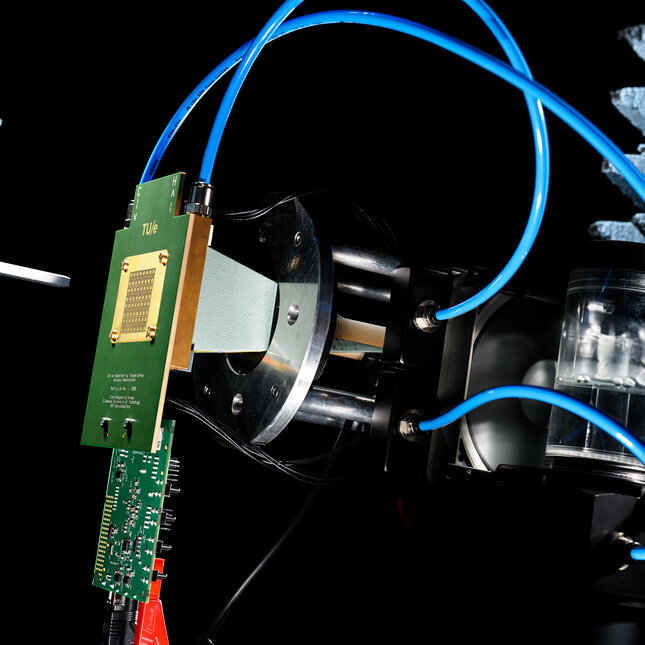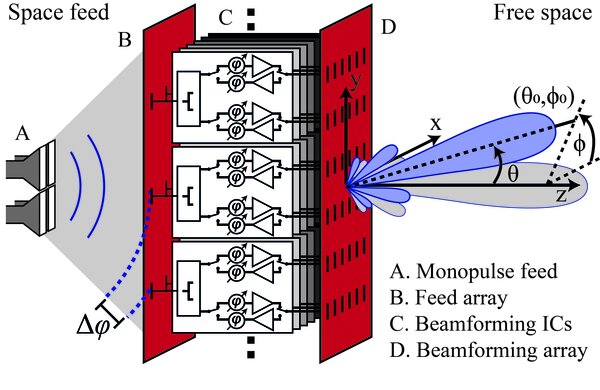Using 5G electronics in large-scale radar arrays
PhD Candidate Martijn de Kok explored the use of SiGe-based 5G mm-wave beamforming IC’s in a large-scale radar.

The demand for increased performance of wireless devices is ever-growing: we transmit and receive more data with our phones every year, expect to reach the highest possible data rates whether we are in the city or in the countryside, and we’d like the bumper radar in our cruise-controlled cars to ensure a safe distance to the next car in any weather. The demand for radio-frequency (RF) bandwidth increases alongside this demand for performance, leading to an increasingly cramped RF spectrum and driving developments towards higher frequencies.
Within the Electromagnetics group at TU/e we are already looking beyond 5G towards the next generations of mobile communications, which are expected to operate at wavelengths in the order of millimeters (so-called millimeter-wave frequencies between 30 and 300 GHz). There are many advantages to using these higher frequencies: the wide available bandwidths enables fast data rates in communication and precise radar measurements. And since antenna designs scale in size with the operating wavelength, millimeter-wave systems can be small and easy to integrate in a smartphone or car bumper.

The challenge at millimeter-wave frequencies is the diminishing performance of transistors with frequencies, and the increasing losses in the air and in cables. This could lead to immense component costs, particularly within niche markets such as large-scale radars where thousands of high-power amplifiers are needed in a single multi-million-euro system.
Low-cost mass-produced electronics
In contrast, the developments in low-cost millimeter-wave devices for 5G networks and commercial satellite communication throughout recent years has led to low-cost and mass-produced electronics. These advances are expected to benefit radar technology as well.
In our article we explore the use of commercial beamforming electronics from NXP Semiconductors in a large-scale fast-scanning radar antenna array. With thousands of antenna elements with low-cost chips, a highly focused ‘pencil’-beam can be generated to make optimum use of the radiated power. Moreover, the electronics allow this beam to be steered very rapidly, within milliseconds, without having to physically move the antenna.

Admirable performance
In the article we demonstrate the system concept with a small-scale array. This demonstrator, which is shown in the photographs, consists of 64 antennas printed on a circuit board, with the chips, cooling block and additional antennas on the rear side.
The water cooling is definitely overkill for this demonstrator array: the chips could be kept cool with a simple heatsink and fan. However, since radar systems frequently push electronics to their power limits, and the chips were not designed with this in mind, we decided to be better safe than sorry. The system performed admirably, with the chips staying tens of degrees cooler than fan-cooled alternatives despite running at full power. This is promising for the full-scale system concept with five hundred times the antenna count.
The array was measured in the anechoic antenna measurement chamber in Flux, where it demonstrated excellent beam-scanning performance. The measurement results, alongside an in-depth look at the design, have been summarized in a journal paper that was recently accepted for publication in IEEE Transactions on Antennas and Propagation.
More information: an early-access version of our article is already available on IEEE Xplore: https://lnkd.in/eXYwwxnP